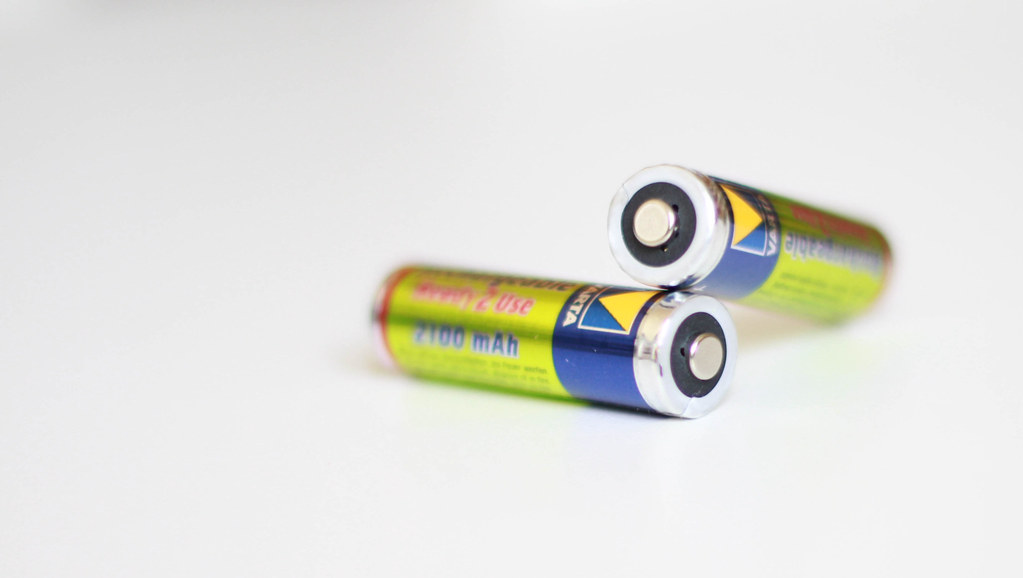
Photo credit Tom Raftery
I published this post on the IBM Global Eco Jam last week and it generated some interesting feedback so I thought I’d re-publish it here too to solicit your thoughts –
I was at the NewNet CleanTech Investors Summit in London last November.
At this event a poll was taken asking which CleanTech issues were perceived as being most important/having the most potential by the investment community – the answers were Energy Efficiency and Energy Storage.
I have seen several posts here on efficiency but none on energy storage so I said I’d start one.
What are the most interesting energy storage solutions people are seeing emerging.
I’ll kick off –
The two most interesting I have seen are
1. Thermal storage using heavily insulated bricks (!) for domestic energy storage (resistive heating) and
2. Metal air batteries – zinc air batteries are scheduled to come to market later this year. Zinc is abundant, cheap, non-toxic, non-explosive and readily recyclable. Zinc air batteries have an energy density about two to three times that of lithium ion batteries.With that energy density and price point, it should be possible to build utility scale storage (allowing renewables to store excess energy when the wind is blowing strongly, and sell it when the wind drops or demand increases, for example).
Are there any other options people are seeing (and let’s leave pumped hydro out of this discussion – it is old tech, expensive and has significant environmental impacts).
One of the respondents pointed me to news out of Stanford in December that Stanford scientists are harnessing nanotechnology to quickly produce ultra-lightweight, bendable batteries and supercapacitors in from everyday paper!
What other interesting forms of energy storage have you come across?

“Interesting” solutions make for good conversation but their exists today a real down-to-earth solution: Vanadium
Vanadium Redox Batteries will enable the Green Energy Smart Grid of our kids’ future: http://tiny.cc/gdmbO
The Vanadium Battery: The Ultimate Energy Storage Solution – http://tiny.cc/UNo8J
@Chuck – thanks for your comment here and under another name on the Enterprise Irregulars post – I’m not a big fan of Vanadium for a few reasons 1. it is expensive, 2. it is not abundant (found mostly in China, Russia and South Africa) and 3. it is highly toxic. By the way Chuck, what’s the weather like in Alberta these days?
@Tom. You may want to rethink your stance on vanadium now that the world’s largest low-cost deposit was announced in 2009 and will be producing vanadium at a cost of under $2/lb V2O5 as soon as 2011. This deposit (in Madagascar) will be a ‘game changer’ and all the steel companies and battery companies know it – they’ve been knocking on their doors ever since the discovery. the lucky explorer that found this Green Giant vanadium deposit is Energizer Resources. Read this if you want to know the details… EnergyBoom.com: Little Known Element Vanadium Making Headway On Energy Scene http://bit.ly/91btc7
By the way, the form of vanadium used in these redox batteries is in such a weak dilute sulfuric acid electrolyte that it is labelled “non-toxic”.
This technology is one of the only socially responsible energy storage options in existence. As a “green” technology, the VRB is characterized by the lowest ecological impact of all energy storage technologies and is unlike most other conventional energy storage systems that rely on toxic substances such as lead, zinc or cadmium. The electrolyte is a solution of vanadium mixed with a dilute sulfuric acid, with about the same acidity as in a conventional lead-acid battery. Unlike lead acid systems however the VRB electrolyte has an indefinite life span and is reusable.
The electrolyte in vanadium reflux batteries is known as an “Aqueous Solution of Sulphates of Vanadium”. It is made up of sulfuric acid, and emulsified vanadium particles.
Performance
* The VRB has an availability of greater than 98%. It is designed for unattended operation with very low maintenance costs.
* No degradation from repeated deep charges and discharges. The system can be discharged and charged greater than 13,000 times (20% to 80% SOC) without deterioration in system efficiencies.
* System round-trip efficiencies between 70% – 78%.
* The VRB-ESS has a charge/discharge window of 1:1 – allowing off-peak charging for on-peak dispatch – a fraction of the time required by other battery systems and ideal for wind generation applications.
* Cross mixing of electrolytes does not lead to contamination of electrolytes
* Indefinite life of electrolyte (no disposal or contamination issues).
* Once charged, the electrolyte remains fully charged with low self-discharge.
Now add to these unbeatable specs the sureness of supply and low price that Energizer Resources’ Green Giant deposit brings and you have THE BEST SOLUTION TO ELECTRICAL ENERGY STORAGE possible. Looking forward to your reply.
Alberta is sunny with a slight chance of death by freezing.
Chuck
Have you seen all the latest info on clean,earth-friendly geothermal energy-now you can even heat your POOL this efficient $ saving way!
Francis, you are 100% right. The ultimate energy source and the biggest perfect battery on the planet is the planet. What we’ve all been looking for is right under our feet. This has been known by many for over 100 years, but there’s a problem…. where’s the money? Free energy is of no interest to anyone with the power to make the move to this obvious solution. Just like the electric cars and trams and trains that were systematically bought out and destroyed by the oil interests in the 1900’s, what makes “sense” does not get done unless it also makes “cents”.
Chuck